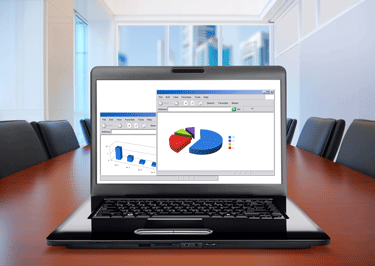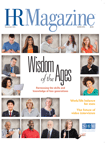New HR Analytics Tools Help Mine Big Data
Next-generation tools make it easier for HR to find the data that matter.

 Whether they realize it or not, HR leaders are sitting on a gold mine. In the era of “big data,” they have access to more workforce information than ever. Tucked away within disparate systems are valuable insights about where companies’ top recruits come from, why key employees leave the organization and in which cases salaries are no longer keeping pace with the market.
Whether they realize it or not, HR leaders are sitting on a gold mine. In the era of “big data,” they have access to more workforce information than ever. Tucked away within disparate systems are valuable insights about where companies’ top recruits come from, why key employees leave the organization and in which cases salaries are no longer keeping pace with the market.
But that data does little good if it can’t be easily accessed and translated into compelling stories that move business leaders to action. Fortunately, the latest generation of analytics software brings HR a few steps closer to making that happen. And, thanks to inviting new dashboards, the tools are easy to navigate as well.
Data-Based Decisions
The HR group at ConAgra Foods is using cloud-based analytics software from vendor Visier as part of its strategy to base more of its human capital decision-making on facts.
According to Mark Berry, vice president of people insights at the Omaha, Neb.-based packaged foods company, the team is focusing on the company’s employee value proposition (EVP)—the factors that attract, retain and engage workers, including work environment, development opportunities, compensation, benefits and more.
“We know that companies with higher EVP usually have lower compensation, benefits and recruiting costs,” Berry says.
The software enables his team to aggregate and analyze data that was previously hard to access. That’s largely because disparate workforce information on demographics, performance, training and internal movement (transfers, promotions and turnover) that once was fragmented is now located in one place.
Berry’s team uses the software to generate enterprise scorecards that track key performance indicators (KPIs). “The tool shows how each business-unit function and location is performing relative to these KPIs, which for us are primarily around talent retention, personnel costs and head count,” Berry says.
ConAgra also worked with the vendor to develop a model dubbed “total cost of workforce,” which enables HR to more accurately assess the full costs of the workforce by factoring in expenses related to recruiting, relocation, temporary labor and pay for time not worked, among other costs. “It allows us to see the true costs by component of any employment decision we make,” Berry says.
Because it can aggregate detailed data over five years, the group can now assess how pay practices affect diversity and retention. “All we could do in the past was determine whether our [diversity] representation had improved year over year,” he says.
Now the software enables Berry’s team to understand specific diversity patterns by business, job, gender, ethnicity, age, tenure and other factors. “We can see where we’re making progress to understand what’s working, and where we aren’t progressing so we can focus resources where we have the biggest needs.”
Visual Aids
Today’s workforce analytics software has evolved most in its visual component, as represented by eye-catching and user-friendly dashboards that display the HR metrics that are most important to users.
“Leading-edge business intelligence software providers have taught HR vendors what can be done from a visualization perspective,” says Kevin Oakes, CEO of the Institute for Corporate Productivity (i4cp) in Seattle. “Enabling users to pull the right workforce data from disparate sources is another area that analytics tools continue to improve upon.”
But having good software doesn’t mean companies are measuring the right things. In general, HR groups in high-performing organizations focus on different workforce metrics than their counterparts in lower-performing organizations, according to i4cp research. For example, high-performing organizations are more likely to track quality of attrition (where talent is being lost in critical job roles) and quality of movement (what happens as a result of transfers, promotions and other internal shifting).
Despite the progress that’s been made in data visualization and integration, more work is needed on the back end functions of many tools. According to Mollie Lombardi, vice president and principal analyst of workforce management at the Brandon Hall Group, an HR consulting company in Delray Beach, Fla., many tools still can’t drill down from dashboards into data sets to explore the root causes of issues such as high turnover in pivotal jobs.
Better software also doesn’t obviate the need for HR to have data science skills. “You still need someone who understands what data points should be correlated or juxtaposed, and who can think critically about the right questions to ask,” Lombardi says.
Being able to tell compelling stories based on the data is also paramount. “What senior executives don’t want is more data,” Oakes says. “They want to understand the story the data is telling them, so HR’s interpretation of it becomes critical.”
Recruiting Analytics
Another big improvement in the newest workforce analytics is talent forecasting, which gives recruiters a gauge of how long it takes to fill job openings and the caliber of applicants they’re likely to receive. Such supply-and-demand data can lead to talent acquisition strategies that are more cost-effective.
Market-intelligence metrics might tell recruiters that it will take about three months to fill a senior engineering job in Boston, for example, or that there are 15 qualified candidates in the region. “The ability to have that kind of conversation on the front end of the recruiting cycle can be a differentiator for recruiters,” says Elaine Orler, CEO of Talent Function, a recruiting technology consulting company in San Diego.
At Cameco, a Canadian uranium producer, workforce analytics have enabled business-unit managers and HR to speak the same language, says Sean Junor, manager of workforce planning and talent acquisition at the company. The software creates a “single source of the truth” on key measures like employee head count, turnover or absenteeism by consolidating data on one platform and giving line managers easier access to workforce metrics.
It also enables business units to be more proactive in using workforce data. “People can reach in and get the information they want each month, when they need it, without waiting for us,” Junor says.
At the same time, HR needs to avoid creating an environment of information overload. “When data moves from HR directly into the business, it removes the data filter and requires more guidance for users,” Junor says. HR can help business units focus on vital information rather than “nice to know” metrics by restricting what they can see in the system.
Measuring Demand
Some HR executives are turning to analytics to model employee retirement and turnover scenarios. At the Black Hills Corp., a diversified energy company in Rapid City, S.D., Chief Human Resources Officer Bob Myers used a workforce analytics tool from SuccessFactors to gauge the impact of a looming retirement surge on the company’s business.
“The software helped us create a demand model,” he says. “In other words, how much demand for talent by job classification is going to occur in specific business units over the next five years, based on retirements, normal turnover and business growth initiatives?”
Calculating that aggregate demand raised eyebrows in the business units, Myers says, and triggered new thinking about recruiting and knowledge-capture strategies. “The model showed that we’re going to lose 24 percent of our current workforce to retirement over the next five years, and those retiring employees represent about 34 percent of our total years of employee experience,” he explains.
That finding led Myers to examine where the loss of institutional knowledge from retiring employees would have the biggest impact and to begin developing strategies to capture that knowledge before it was gone. He is hoping the effort gives his organization a competitive advantage over other energy companies facing similar workforce changes—an edge it would not have had without analytics.
Dave Zielinski is a freelance business journalist based in Minneapolis.
Advertisement
An organization run by AI is not a futuristic concept. Such technology is already a part of many workplaces and will continue to shape the labor market and HR. Here's how employers and employees can successfully manage generative AI and other AI-powered systems.
Advertisement


